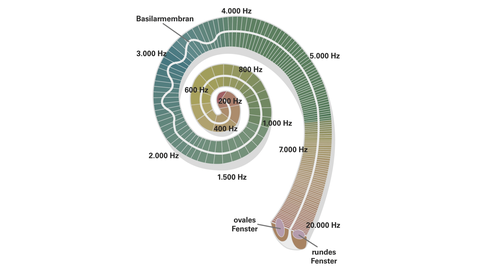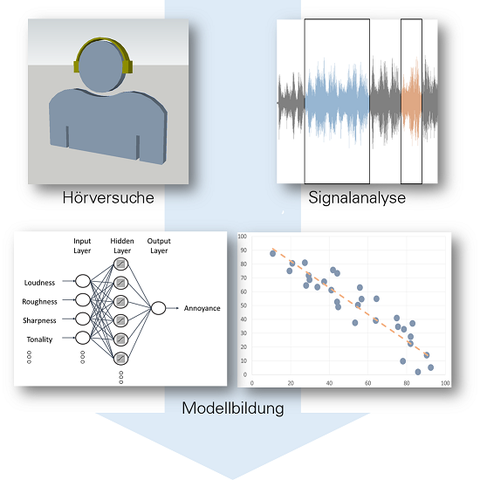Psychoacoustics
As a branch of psychophysics that investigates the relationship between physical stimuli and the perception of stimuli, psychoacoustics seeks to bridge the gap between physical acoustic events and perceptible auditory events. Moreover, information processing in the auditory system is one of the main topics of psychoacoustics, in other words, to understand how our ears work in the sound perception process as a coupled system with our brain.
To understand this perceptual domain, hearing tests are often conducted under controlled conditions with subjects. Listening tests represent experimental examinations in which acoustic stimuli are presented and evaluated by subjects with prior instruction regarding specific questions. Threshold measurements, just noticeable differences or complex perceptual phenomena e.g. Annoyance can be determined by listening tests. A variety of different psychoacoustic measurement methods (e.g., semantic differential, BTL scaling, magnitude estimation, category scaling, etc.) are available for different purposes.
Understanding of the basic concepts of psychoacoustics, such as the masking and the psychoacoustic parameters such as loudness, sharpness, roughness, tonality and fluctuation strength allow us a perception-based engineering in real applications.
By comparing physical and psychoacoustical measurable and predictable parameters with the subjective results obtained by listening tests, it is possible to develop an indexing tool to predict sound quality assessments. In the end, indexing tools can be helpful for the manufacturers to have early decisions in the design phase of an equipment, thus improving the sound quality of a product. As a result, companies can offer less disturbing, more pleasant products to the society.
Psychoacoustics has many different uses:
In vehicle acoustics, psychoacoustics may be e.g. help to make a vehicle sound sportier and to make the noise in the vehicle interior more pleasant. To ensure safety, especially for weaker road users, the sound design often uses psychoacoustic parameters to generate the artificially generated outside noise, which will be used in future in electric mobility.
Psychoacoustics also plays a vital role in avoiding annoyance. It can be applied to the household appliance acoustics to improve their sense of quality.
Contact
Mitarbeiter
NameMr Dr.-Ing. Serkan Atamer
Send encrypted email via the SecureMail portal (for TUD external users only).
Professur für Akustik und Haptik
Professur für Akustik und Haptik
Besucheradresse:
Barkhausenbau, Raum BAR 62 Helmholtzstraße 18
01062 Dresden
None



